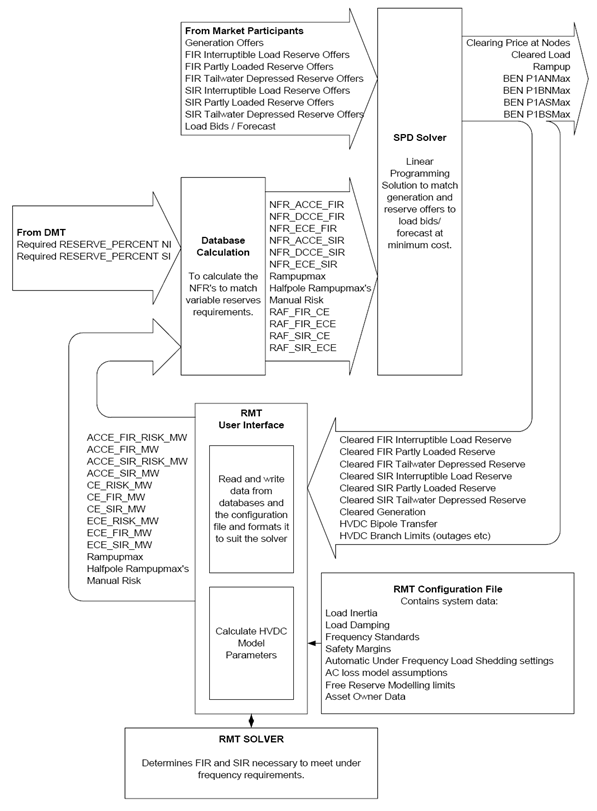ifference between revisions of "EMO:Reserves"
Jump to navigation
Jump to search
| Line 108: | Line 108: | ||
| | | | ||
:Calculated by RMT. Quantifies the maximum transient overload power that the HVDC link can transfer at the inverter after a Contingent Event, not taking any AC constraints into account. | :Calculated by RMT. Quantifies the maximum transient overload power that the HVDC link can transfer at the inverter after a Contingent Event, not taking any AC constraints into account. | ||
| + | |- | ||
| + | | | ||
| + | :''Halfpole Rampupmax'' | ||
| + | | | ||
| + | :Calculated by RMT. Quantifies the maximum transient overload power that the HVDC halfpoles can transfer at the inverter after a Contingent Event, not taking any AC constraints into account. | ||
Revision as of 15:14, 21 January 2013
The Reserve Management Tool
The inputs to the SPD solver are shown in the figure and table below (adapted from Transpower's Reserve Management Tool (RMT) functional specification). There are two broad categories of input:
- Energy and reserve offers from market participants
- Parameters that define the Reserves requirement are calculated mostly by a software application: the RMT.
| Term | Explanation |
|---|---|
|
|
|
|
|
|
|
|
|
|
|
|
|
|
|
|
|
|
|
|
|
|
|
|
|
|
|
|
|
|
|
|
|
|
|
|
|
|
|
|
|
|
